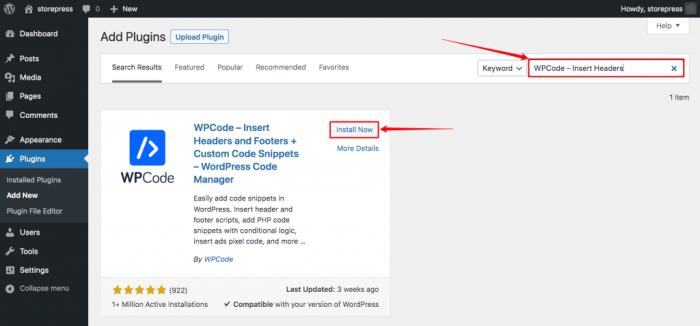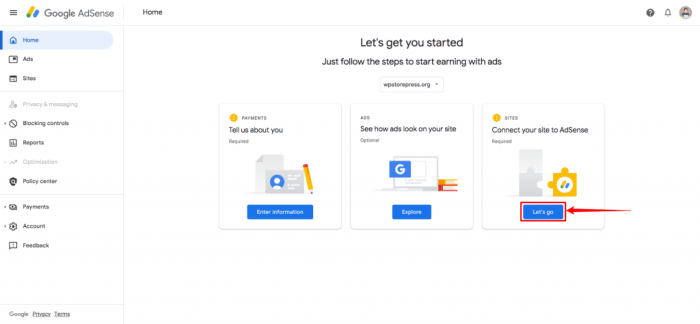How to Monetize a WordPress Blog with Google AdSense – Building a successful blog takes dedication, creativity, and a smart monetization strategy. One of the most popular and accessible ways to earn revenue from your WordPress blog is through Google AdSense. This comprehensive guide will walk you through the entire process, from application to optimization, ensuring you understand how to maximize your earnings and avoid common pitfalls.

Source: shortpixel.ai
Understanding Google AdSense
Google AdSense is a contextual advertising program that allows website publishers to display relevant ads on their blog. These ads are generated by Google’s vast advertising network and are tailored to the content of your pages. When a visitor clicks on an ad, you earn a portion of the revenue. The amount you earn depends on several factors, including the type of ad, the click-through rate (CTR), and the advertiser’s bid.
Key Advantages of Using Google AdSense:
- Ease of Use: The AdSense platform is relatively straightforward to navigate and use, even for beginners.
- Wide Reach: Google’s extensive advertising network ensures your ads are shown to a broad audience.
- Automated Ad Placement: AdSense offers automated ad placement options, simplifying the process of integrating ads into your blog.
- Reliable Payment System: Google has a reliable payment system, ensuring you receive your earnings on time.
- Detailed Reporting: AdSense provides comprehensive reports, allowing you to track your performance and identify areas for improvement.
Getting Started with Google AdSense
Step 1: Eligibility Requirements, How to Monetize a WordPress Blog with Google AdSense
Before you can apply for AdSense, you need to meet certain criteria. These include:
- Original Content: Your blog must feature original, high-quality content that complies with Google’s AdSense Program policies. This means avoiding duplicate content, scraped content, and content that violates copyright laws.
- Sufficient Traffic: While there’s no minimum traffic requirement, having a decent amount of organic traffic will significantly increase your chances of approval. A well-established blog with consistent readership is more likely to be accepted.
- Clear Navigation: Your website should have a clear and user-friendly navigation structure, making it easy for visitors to find information.
- Compliant Content: Your content must adhere to Google’s AdSense Program policies, which prohibit certain types of content, such as adult content, hate speech, and illegal activities. Refer to Google’s AdSense Program policies for detailed information.
Step 2: Applying for Google AdSense
Once you meet the eligibility requirements, you can apply for AdSense through the official Google AdSense website. The application process involves providing information about your website, including your website URL and contact details. You’ll also need to verify your identity and ownership of the website.
Step 3: AdSense Code Implementation
After your application is approved, you’ll receive an AdSense code. This code needs to be integrated into your WordPress blog. There are several ways to do this:
- Using a Plugin: Several WordPress plugins simplify the process of adding AdSense code to your blog. These plugins often offer features for optimizing ad placement and tracking performance.
- Manual Implementation: You can manually add the AdSense code to your blog’s theme files or using a code snippet plugin. This method requires some technical knowledge.
Optimizing Your AdSense Earnings: How To Monetize A WordPress Blog With Google AdSense
Simply adding AdSense code to your blog isn’t enough to maximize your earnings. You need to optimize your ad placement and strategy to improve your click-through rate (CTR) and overall revenue.
Strategies for Increasing AdSense Revenue:
- Strategic Ad Placement: Place ads in high-visibility areas of your blog, such as above the fold, below posts, and within the sidebar. Avoid placing too many ads, as this can negatively impact user experience.
- High-Quality Content: Focus on creating high-quality, engaging content that attracts a large audience. The more traffic you have, the more potential ad impressions and clicks you’ll get.
- Responsive Design: Ensure your blog has a responsive design that adapts to different screen sizes. This is crucial for providing a good user experience on mobile devices.
- Target Audience: Understand your target audience and tailor your content to their interests. This will attract more relevant traffic and potentially increase ad revenue.
- Experiment with Ad Formats: Experiment with different ad formats, such as banner ads, in-article ads, and matched content ads, to see which performs best on your blog.
- Monitor Your Performance: Regularly monitor your AdSense performance using the provided reports. Identify which ads are performing well and which ones are underperforming. Adjust your strategy accordingly.
- Improve Page Speed: A slow loading website can negatively impact user experience and CTR. Optimize your website’s speed for better performance.
Avoiding AdSense Account Suspension
It’s crucial to understand and adhere to Google’s AdSense Program policies to avoid account suspension. Violating these policies can lead to your account being disabled and your earnings forfeited.
Common Reasons for AdSense Account Suspension:
- Invalid Clicks: Engaging in click fraud or encouraging others to click on your ads can result in account suspension.
- Inappropriate Content: Publishing content that violates Google’s AdSense Program policies, such as adult content or hate speech, can lead to account suspension.
- Copyright Infringement: Using copyrighted material without permission can result in account suspension.
- Misrepresentation: Misrepresenting your website or your audience can lead to account suspension.
Frequently Asked Questions (FAQs)
- How long does it take to get approved for AdSense? The AdSense approval process can take anywhere from a few days to a few weeks.
- How much money can I make with AdSense? Earnings vary greatly depending on factors such as website traffic, niche, ad placement, and CTR. There’s no guaranteed income.
- What are the payment methods for AdSense? AdSense typically pays through electronic funds transfer (EFT), wire transfer, or check.
- Can I use AdSense with other monetization methods? Yes, you can combine AdSense with other monetization strategies, such as affiliate marketing or selling digital products.
- What if my AdSense application is rejected? If your application is rejected, review Google’s AdSense Program policies and address any issues before reapplying.
Conclusion
Monetizing your WordPress blog with Google AdSense can be a rewarding experience. By following the steps Artikeld in this guide and consistently creating high-quality content, you can significantly increase your chances of success. Remember to always adhere to Google’s AdSense Program policies and prioritize user experience. Start building your blog today and unlock the potential of AdSense!
Call to Action (CTA)
Ready to start earning revenue from your WordPress blog? Apply for Google AdSense today and begin your journey towards monetization success! Apply Now!
Popular Questions
What is the minimum payout threshold for Google AdSense?

Source: googleusercontent.com
The minimum payout threshold varies by country but is typically around $100.
How long does it take to get approved for Google AdSense?
Approval times vary, but it can take anywhere from a few days to a few weeks.
Can I use AdSense on any type of website?

Source: shortpixel.ai
No, AdSense has strict content guidelines; your website must adhere to their policies to be approved.
What are the best ad placements for maximizing clicks?
Experiment with different placements, but generally, above the fold and within the content are effective.
How can I increase my click-through rate (CTR)?
High-quality, relevant content and strategically placed, non-intrusive ads are crucial for a higher CTR.